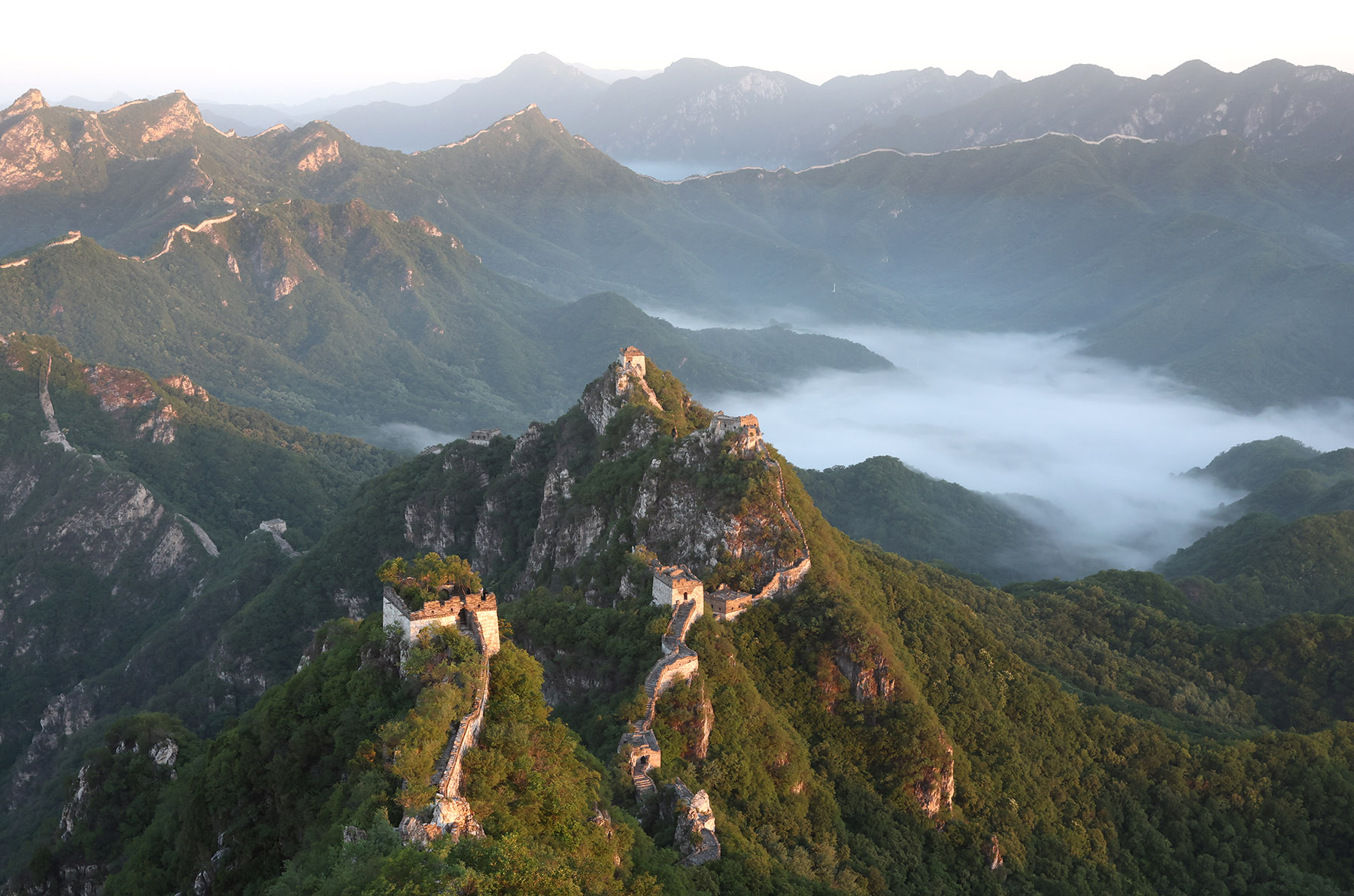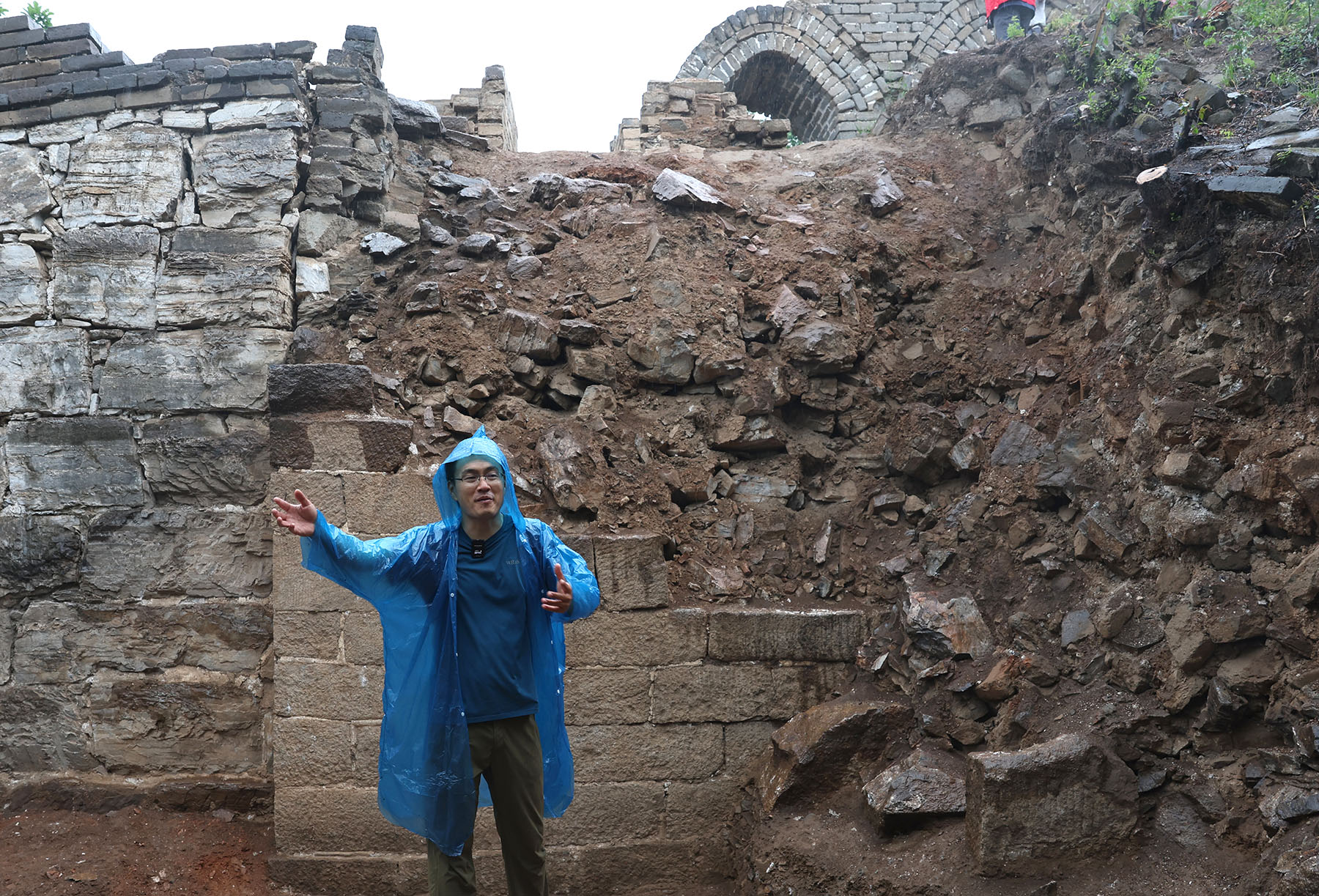
A new round of restorations of the Jiankou Great Wall in Beijing's Huairou district kicked off on Friday, marking a significant milestone in the ongoing conservation efforts of this historical marvel.
The section stretches about 7,800 meters and has gone through four rounds of restoration since 2016, with a substantial 4,250 meters already revitalized.
The latest restoration project involves 915 meters of the Jiankou section, including six watchtowers and five sidewall sections. The project is scheduled for completion by the end of November 2026.
The project is in the wake of an archaeological study that started in April. The archaeological work was carried out from west to east, incorporating methods that involved the participation of multiple disciplines to present in detail the historical information of this section of the Great Wall, according to Shang Heng, an associate research fellow at the Beijing Institute of Archaeology.
More "technological archaeology "methods were employed this time, involving botany, zoology, materials science, metallurgy and environmental science, Shang says.
READ MORE: Great Wall guardian
"For example, in the field of environmental science, the excavation of the deeply buried soil around the watchtowers will help restore the historical environment and study the varieties and conditions of the vegetation that existed, thus providing a scientific basis for future vegetation management on the Great Wall," Shang explains.
At the same time, to avoid long gaps between archaeological work and restoration, the project employs a coordinated archaeology and restoration approach, ensuring both processes proceed in sequence.
Lyu Yan from the institute has been in charge of environmental archaeology for the project. She has taken small samples of mortar from the brick joints and is working on analyzing their constituents.
Lyu has engaged in Great Wall studies over the years and has found the formation of mortars varies by location on the Great Wall.
Oxide composition, minerals and organic components will be analyzed, and mechanical tests will be conducted to assess the pressure the mortar can withstand.

Additionally, she says she will compare the samples with the dolomite found around the Great Wall and try to determine the origin of the mortar and reconstruct the ancient processes of mortar production and firing.
Yin Da, also from the institute, has been paying attention to vegetation on the Great Wall.
She joined the study and restoration of the Dazhuangke Great Wall in Yanqing district, northwestern Beijing, a few years ago.
Through the identification of large plant remains, charred plant seeds were discovered in the soil accumulations of stoves and heated brick beds in her previous work, which she says can be used to explore issues related to the composition, source and supply methods of military provisions during the Ming Dynasty (1368-1644).
Yin says she hopes she can make richer discoveries in the Jiankou project. In addition to examining more types of military provisions of the frontier soldiers in ancient times, Yin says she is also interested in understanding the various ways the Ming and Qing (1644-1911) garrisons obtained and utilized plant resources around the Great Wall.
Shang believes the involvement of "technological archaeology" will produce richer results.
"Not only can we reconstruct the daily lives of the frontier soldiers, but we can also make the Great Wall, which many see as solely a military structure, warmer and more vivid and tangible, revealing more stories hidden beneath its mysterious facade," Shang says.
ALSO READ: Ancient sites link with future
During the restoration, numerous professional teams specializing in Great Wall conservation will be involved, adhering to the principle of minimal intervention, according to the authorities in charge of the restoration. Traditional techniques and materials will be used for emergency reinforcement to preserve the current state of the cultural relics and maintain the historical appearance of the Jiankou Great Wall for the public, according to the authorities.
Additionally, comprehensive digital recording will be carried out throughout the new restoration project. Digital information and 3D modeling have been conducted before the project started and during the archaeological process, and will continue during restorative construction and after completion, according to technology provider Tencent.
This will create a complete digital record of the restoration process and establish a chronological digital scenario, according to Tencent.
Deng Chao, director of the artifact and historical site department of the National Cultural Heritage Administration, says related parties should implement guidelines for cultural relic work in the new era and accurately follow the direction of the Great Wall protection work.
Deng calls for strengthening the management of cultural and tourism projects involving the Great Wall, building a comprehensive value presentation system for the Great Wall, and further improving policies and measures for social participation in the protection of the Great Wall.


